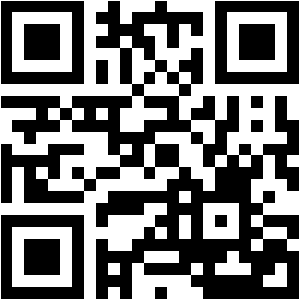| University | Victoria University of Wellington (VUW) |
| Subject | MGMT316 Decision modelling for managers |
2025 Assignment 1 40% of course grade, CLOs 2, 3, 4, 6
Electronic Card Transaction Data
A high net-worth foreign individual is contemplating introducing a new electronic payment system in the New Zealand market.
It is the first week of August 2025. The investor is trying to understand the electronic payments situation in New Zealand. You have recently completed your BCom at Victoria University, where you studied MGMT 316. You have met the investor at a social gathering and are keen to impress with your new knowledge. The investor is also keen to size you up for possible employment. So you have been given the attached spreadsheet, sourced from Statistics New Zealand data, giving total electronic card transaction data from October 2002 to June 2025, in millions of dollars, broken down by credit and debit card sales, and by industry sector (Consumables, Durables, Hospitality, Services, Apparel, Motor Vehicles (excluding fuel) and Non-Retail transactions (excluding services).
Part A
Prepare a summary report for the investor (one page, plus graphs and tables) explaining your assessment of the reliability of the data and the patterns you see in each of the nine time series.
Part B
In your discussions with the investor, you have learned that they are interested in the total potential electronic card sales, but especially the potential for customizing the new offering for the Consumables and Hospitality sectors. The investor has suggested you prepare a forecast for the July total card, consumables and hospitality spending using a four-period moving average and exponential smoothing (with weights (α) suggested of 0.8 and 0.4). However, you suspect this might be a test and that a regression model using seasonal dummies will yield a better forecast, at least for some of the time series. Prepare another report providing the forecasts using each method for the Total, Consumables and Hospitality sectors and explain to the manager which you would recommend, based on the strengths and weaknesses of each method.
Part C
The investor now asks you to prepare a forecast for the three series for the next two years (July 2025 to June 2027). Would you change the method used for the forecast used in Part B above for any of the time series? If so, why? Calculate the forecasts for the extended period and report them in a further memo to the Investor. How confident are you in the accuracy of these forecasts?
Part D
Finally, the investor asks you to explain the usefulness of ARIMA forecasting for these data. You are shown the attached plots and correlograms of the Total electronic card data and Consumables data from July 2020, and the first order 12 period seasonal differences. Provide a brief explanation of the role of stationarity in time series forecasting, the key differences between seasonal regression-based and ARIMA forecasting, and whether (in your view) the additional effort required for ARIMA forecasting of this series is likely to be justified by providing a substantially more accurate forecast than provided in Part C for this series. (Note – you are not required to calculate the ARIMA forecasts for this part– just discuss the theoretical implications and interpretations from the plots provided).
Stuck! Do not Know Assessment Answers?
Hire NZ Native Experts 24/7.
Assessment Rubric
| Component | Evaluation components |
Marks Available |
| Memo presentation | Introduction
Structure, style and flow Clarity and conciseness Spelling, punctuation, appropriate language and grammar Figures, graphs and tables Correct referencing |
10 |
| Part A | Appropriate graphs selected and presented
Correct identification of levels, trends, seasonality, steps etc Identification of outliers Other factors |
15 |
| Part B | Description and justification of chosen forecasting model(s)
Correct analytical procedures followed to derive the forecasts Discussion of strengths/limitations/accuracy of forecasts Assumptions made explicit |
30 |
| Part C | Correct analytical procedures followed to derive the forecasts
Critical evaluation of method chosen. Assessment of accuracy. |
20 |
| Part D | Discussion of stationarity and application to selected series
Critical comparison of methods (theoretical elements) Critical comparison of methods (case context) |
15 |
| Spreadsheet modelling | Face validity of models
Correctness of formulae Clear and helpful layout/naming conventions Explanations/documentation of formulae and calculations performed for the analysis |
10 |
| Total Score | 100 | |
Buy Custom Assignment & Homework Solutions
Pay to NZ Native Writers | Cheap Cost & Plag Free
Are you in need of professional assistance with your MGMT316 assignment? For your academic requirements, New Zealand Assignment Help provides an excellent report writing service. To help you impress your professors and investors, our skilled writers provide clear reports, precise forecasts, and in-depth analysis. Get expert help now to improve your grades with dependable, tailored support!
- RES903 Research Dissertation Assessment One | Nelson Marlborough Institute of Technology (NMIT)
- 71338 Managing Change Assessment 3 Strategy and Implementation Report | Open Polytechnic
- BSRV4601 Fundamentals Real Estate Assignment 1: Eligibility and licensing | Open Polytechnic (OP)
- MGMT801 Managing in a Multi-Cultural Environment Assignment 1 Report, Auckland Institute Of Studies (AIS) New Zealand
- ACCT801 Accounting for Managers Assignment 2 GreenTech Solutions Co. (GTS) Case Study , Auckland Institute Of Studies (AIS)
- Human Resources Management Assignment 3: Strategic HRM Reflection Report – University of Auckland
- HTCS6701 Information System Security Assessment 2 Report – Level 6 Diploma in Cybersecurity New Zealand
- Master of Teaching and Learning Early Childhood Education Assignment – New Zealand Tertiary College
- PUT103 Traditional and Contemporary Practices and Solutions – Assessment Two: Field-Based Observation Plan (Mātauranga Māori)
- PUT103 Traditional and Contemporary Practices and Solutions Assessment One Field Based Observation Report – Scientific


